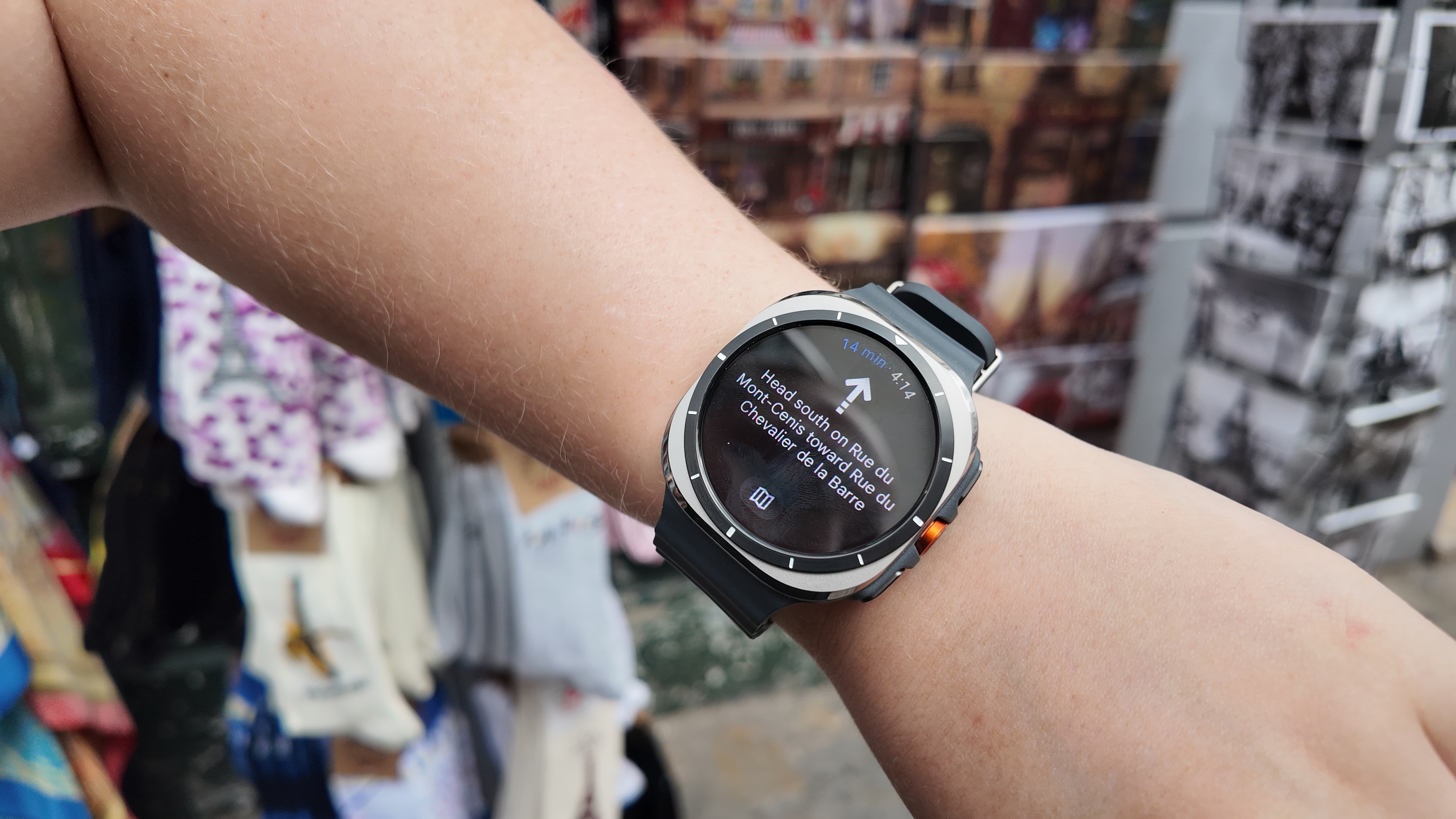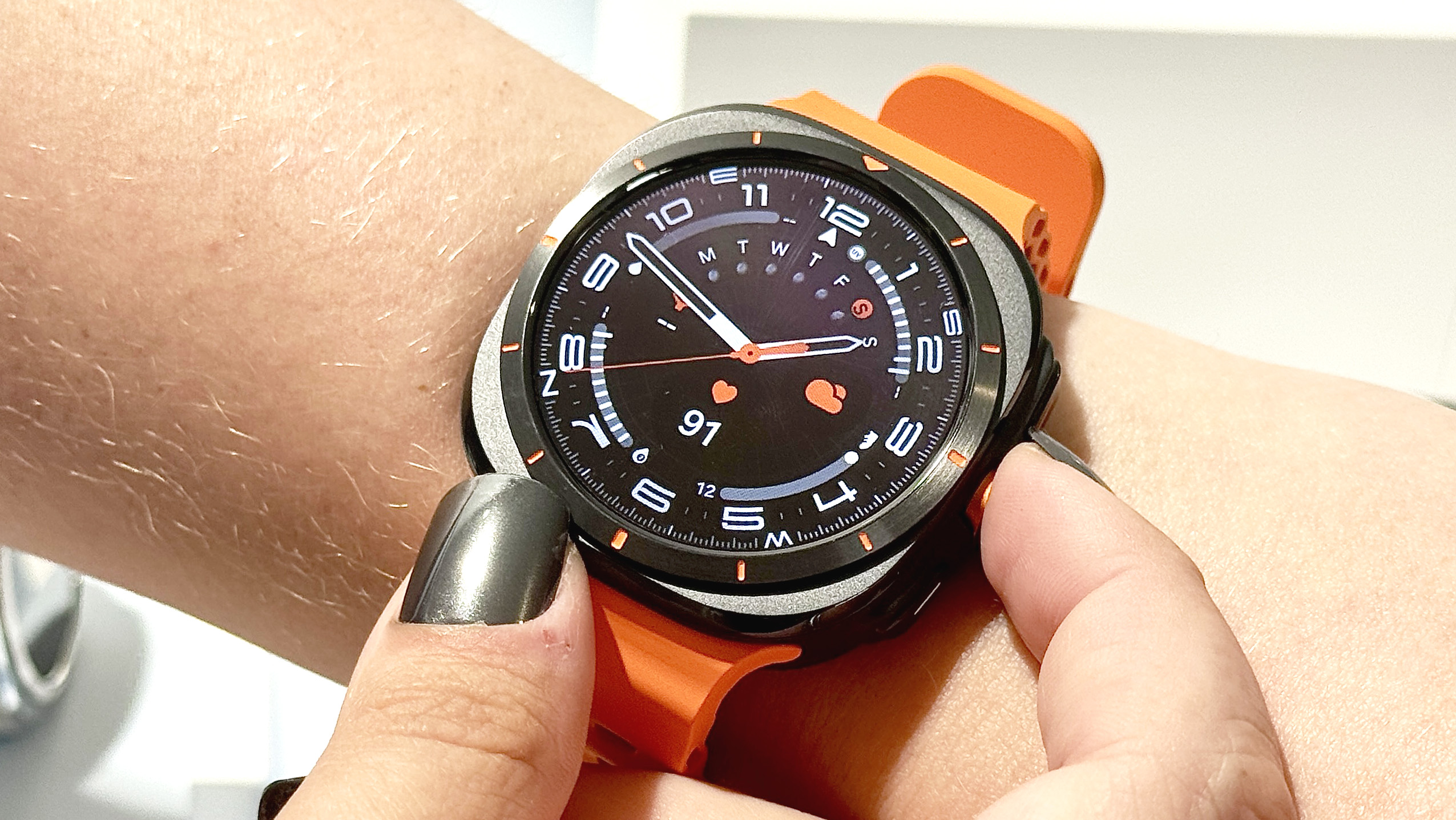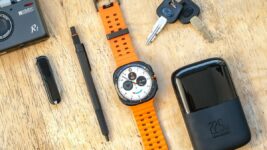Often when it comes to wearable tech, I find myself enviously staring through a locked fence. The problem is that it’s a fence I built myself.
With the summer releases of Samsung’s Galaxy Watch 7 and Watch Ultra, followed closely by Google’s Pixel Watch 3 and more recently the new Apple Watch Series 10, I decided to fix that.
My goal was to consciously wear one of the best smartwatch models for a month and to determine if it was something I could make a part of my life. Within that, a couple of sub-goals I had for myself were to reduce my day-to-day phone use. I don’t regularly wear even a “dumb” watch, so I find myself pulling my phone out to check the time, which generally turns into checking in on a notification and getting distracted from there. It’s unnecessary and I’d like to make better choices.
The other sub-goal was to track my fitness levels and encourage myself to get back on track health-wise. All doable with a smartwatch.
So, how did it go?
I wore the Galaxy Watch Ultra for a month: Getting Going

Initially, I was looking to just try out the new basic Samsung Galaxy Watch 7. Somehow I got sent the high-end Galaxy Watch Ultra which retails for $649. That was a surprising package to open.
I have to admit the watch looks pretty slick. Personally, I would have preferred if Samsung had kept the case shape round instead of a circular face stuffed into a square body. It’s also a fairly large watch at 47mm compared to the 40 and 44mm sizes for the Watch 7. When it comes to watches, smart or otherwise, I am not a fan of chunky devices and prefer a more svelte fashion.
Additionally, the Galaxy Watch 7 comes with nearly all the same features as the Ultra for nearly half the price. Here’s a closer look at the Galaxy Watch 7 vs. Galaxy Watch Ultra.
The Galaxy Watch Ultra is made of aerospace-grade titanium and is supposed to withstand harsh conditions. The worst I’ve done with it is rub the screen along my car while moving a tent. Fortunately, it’s highly scratch-resistant and I have noticed nary a mark on it from that little accident.
For a first-timer in the smartwatch game, right away this felt like way too much watch.
The setup was fairly easy. I already use a Samsung Galaxy S23 Ultra as my daily driver, so pairing was a breeze. My understanding is some features won’t work or play well with other devices, and not at all for anyone rocking an iPhone.
I tried the Galaxy Watch Ultra for a month: I don’t sleep (and other tracking)

Throughout trying the Galaxy Watch Ultra, I had a love/hate relationship with all of the tracking features available on the watch.
Briefly, I really enjoyed the fitness tracking and getting into the minutiae of the different sports you could access. For the most part, I only really tracked via walking, hiking and jogging as my sport of choice is disc golf which is mostly hiking with some throwing added in. Still, it was nice to be able to differentiate between the three. You can create a label for a new exercise, which I could have done for disc golf but it made sense for me to just pick something that already existed.
I am trying to exercise more and found the tracking information presented by the watch very helpful, especially when I am trying to hit more specific goals like active time and heart rate.
Unfortunately, those were the only tracking metrics that I really found useful.
I have a five-month-old baby who is at war with the concept of sleep. So, I don’t really need to know that I’m not sleeping. here
Starting with the biggest dismissal, I, currently, have no personal need for sleep tracking. There are two reasons for this.
First, I have a five-month-old baby who is at war with the concept of sleep. So, I don’t really need to know that I’m not sleeping. My partner has an Apple Watch Series 9 and is fully aware of how much deep sleep she is not getting. If I were getting more regular dozing done, perhaps I would find this information more interesting and helpful rather than adding to the frustration.
Secondly, I don’t enjoy the feeling of wearing accessories when I am sleeping. This includes things like necklaces, my wedding ring, and now the watch. I did give it a try over the last week or so of my experiment but I was so consistently aware of the watch that it hindered me from sleeping.
This means that I didn’t get access to Samsung’s new Energy score because it requires sleep-tracking data as part of its calculation. So, I have no idea if that is a helpful feature.

The latest Galaxy Watch’s biggest new tracking feature is the sleep apnea detector and improved ECG tracking; the latter has been on the Galaxy Watch series for a bit. I tested out the ECG tracker, and it’s interesting but nothing I felt like I needed.
ECG monitors your heart’s electrical activity and rhythm, but does not, as the app continually reminded me, track heart attacks. That said, it can in theory detect early warning signs. Obviously, sleep apnea detection was not utilized.
Annoyingly, the feature I was most excited to try was the stress tracker. However, the watch seems to think I am constantly redlining stress, which, ironically, probably made me more stressed. Perhaps that’s because I’m not sleeping well, but even when I took time to try the destressing breathing exercises on the watch, it still read as red-level stress. I have seen speculation that it might be related to heart rate. Via the watch, I’ve found that my constant is in the 75 to 80 range, which is higher than I want it to be, but it’s not clear if that’s what’s causing my stress levels to seemingly be so high.
I tried the Galaxy Watch Ultra for a month: Anything I did like?
I did find media control a nice touch as I regularly walk my dog with podcasts or music playing. Having the ability to pause, skip or play without pulling out my phone or holding it in my hand was welcome.
Tracking rounds via the UDisc app for disc golf was a bit wonky on the watch, but again, not using my phone was the goal here. It was helpful in feeling more connected to what I was actually doing and not worrying about the rectangle in my pocket or bag.
When I was out and about, the ability to use the watch for payments via Google Wallet (or Samsung Wallet) was a nice touch especially when I accidentally left my wallet at home while picking up my son from school. I’ve found that not every store or system accepts these yet, but for the most part, I had no issue making purchases with my watch when I really needed it.
Outlook: Do I need to keep wearing this?

I went into this experimental smartwatch month with as open a mind as I could muster. From where I sit now, I honestly can’t decide if I’ll keep wearing the Galaxy Watch Ultra or not.
Using it as a smartphone extension is a nice way to keep my phone in my pocket, which was a big goal, and the smartwatch is far less distracting to interact with. I also liked having the weather, texting, and certain apps like UDisc close at hand.
However, many of the tracking features are a waste for my current life situation. The sleep tracking is totally lost on me. At least the fitness tracking features proved useful as I attempt to get my exercise back on track, though, beyond a professional athlete, I’m not certain anyone needs everything that’s on offer here.
If I were to just stop wearing the watch tomorrow, I don’t know that I would miss it since my smartphone is available with the information I need. Still, with the fitness tracker, Google Wallet access and distraction-free living, it makes an argument for sticking around.
I wouldn’t call myself a smartwatch evangelist but I would like to try again, perhaps with a smartwatch that isn’t as expensive or chunky as the Galaxy Watch Ultra and maybe slightly less feature-rich, though I may have missed the boat on that one.




